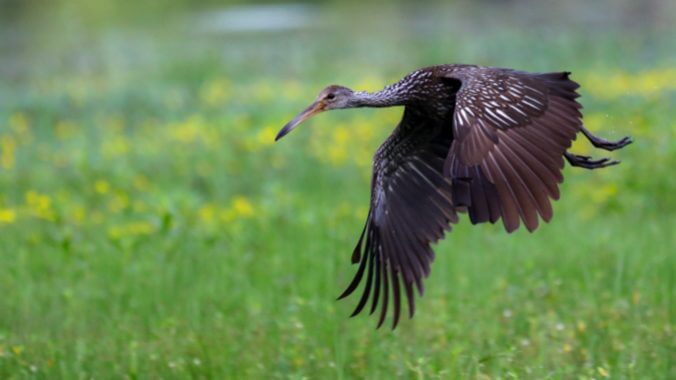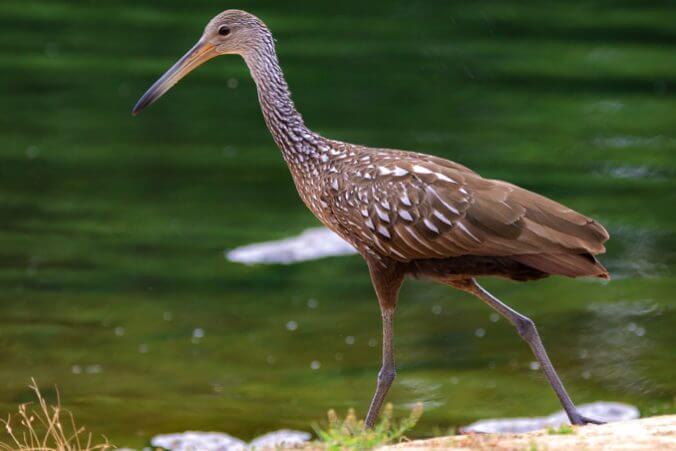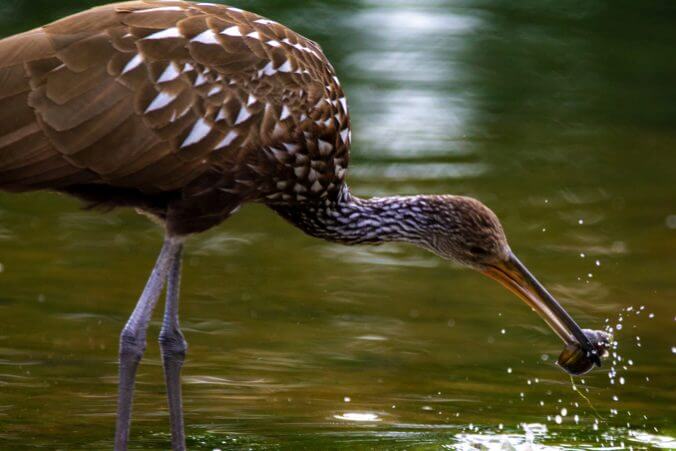The Coolest Birds: Limpkins Are Popping Up Everywhere
Photos by Josh Jackson
Welcome to another installment of “The Coolest Birds.” When I launched Paste Magazine with friends back in 2002, it was about our collective passion—for music, film, books and culture. As we’ve added to our passions, Paste has been that outlet to talk about everything from great craft beer and whisky to travel destinations we’ve loved. And in the last few years, I’ve developed a passion for the abundant nature around Atlanta. I’ve realized lately that I have a lot of “favorite birds,” often depending on what I’ve just witnessed out in the woods. In this column, I’ll try to express what makes these avian creatures so spectacularly interesting.
Historically, the only place in the U.S. you were likely to find a Limpkin was in Florida. These lanky waders have long bills with tips curving slightly to the right, an evolutionary trait that allows them to pull freshwater apple snails from their curved shells. They range from Argentina to Jacksonville, but by the 19th and early 20th century they had been hunted to the precipice of eradication in America. They were finally removed from Florida’s endangered species list in 2011.

But in recent years, birders from New York to Colorado, Texas to Minnesota have all come across an unusual visitor as vagrant Limpkins have scattered across the eastern half of the U.S., so much so that those tracking rare birds jokingly began referring to the middle months of 2022 as the “Hot Limpkin Summer.” This year has been no different with Pennsylvania getting its first state record just last month. Whether due to climate change, a recovered population seeking less competition, or the spread of invasive apple snail species from discarded aquariums, birders far from Florida have enjoyed catching a glimpse of these unusual birds.
I certainly did the first time I visited Lake Shamrock—part of the Clayton County water system—just 15 miles south of the Atlanta city limits. Three large, speckled brown wading birds were hunting for snails in the shallows, unbothered by nearby fishermen or me with my camera. Limpkins look a little like a heron or a crane or an extra-large rail, but they’re the only member of the taxonomic family Aramidae. They occasionally will eat mussels or take the opportunity to prey on a frog, lizard or insect, but the bulk of their diet is apple snails, which they’ll hunt day or night.

Limpkins can swim, walk or fly, climb trees and build nests in all sorts of swampy locations. And pairs can defend their territories all year round. The first time I heard a Limpkin call out, I was startled. It sounds like something from a Jurassic Park movie, a sharp nasally shriek aided by the males’ long, looping trachea. It’s another reminder that birds are literally modern-day dinosaurs. I’ve never heard a mating pair calling back and forth, but it’s an eerie duet for an evening in the marsh.
Since my first encounter with a Limpkin, a few have been spotted even closer to the city. I’ve tried and failed to find them twice, but last month I was able to see a lone bird near the Roswell Riverwalk just north of town. The boardwalk meanders between the Chattahoochee River and a shallow wetland fed by the river. It’s one of the best places in the city for migrant shorebirds like the young Little Blue Herons who disperse from the rookeries nearer the coast where they’re born. It’s the only place in the city I’ve ever seen a Roseate Spoonbill, another rare visitor to Atlanta.

This Limpkin was opposite the boardwalk, though, and I had to walk along the main road, where a few other birders were already there with binoculars and cameras. It was moving farther and farther away until a Great Blue Heron chased it back towards us and I was able to get a photo of the Limpkin in flight.
The Limpkins’ range suddenly exploding northward is unusual for a native species, but it may be a sign of things to come as climate change upends our natural ecosystems. And while the implications can be scary, for now, keep your eyes out for a strange and very cool visitor to your local wetlands. Limpkins are definitely on the move.
Josh Jackson co-founded Paste Magazine in 2002, where he serves as president and editor-in-chief. Follow him on Twitter at @joshjackson or his bird photography @BirdsAtl on Twitter and atl_birds on Instagram







































